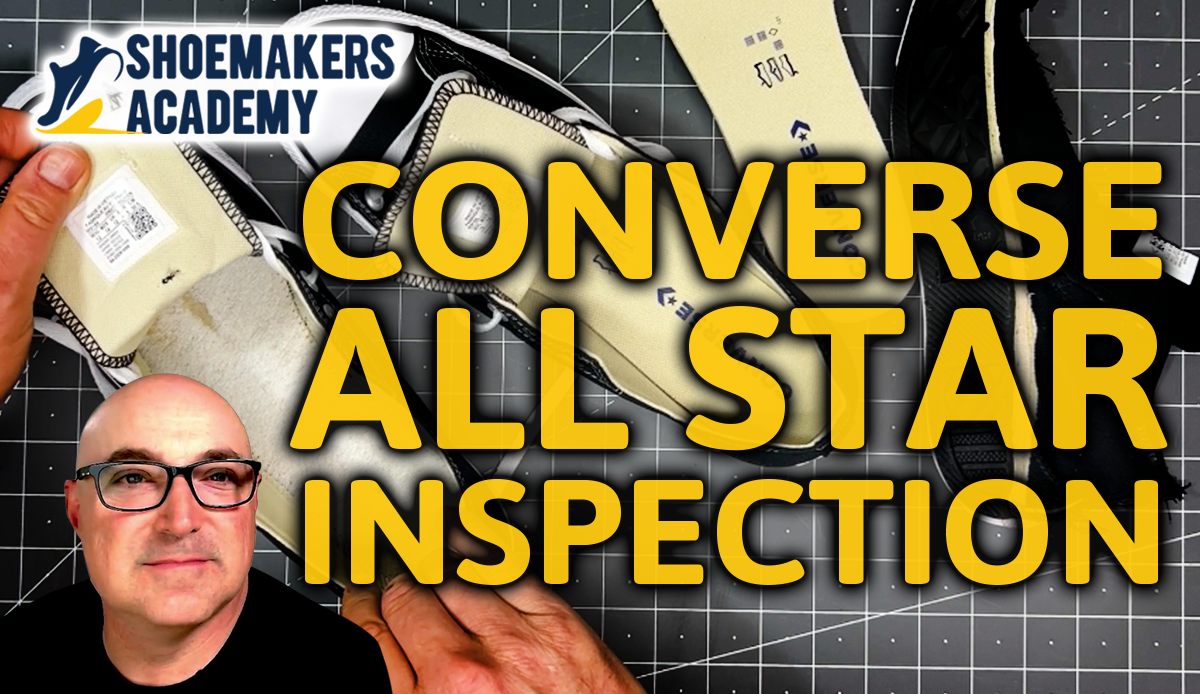All Star Inspection : Converse Sneaker Shoe Review
It’s Wade from the Shoemakers Academy, and we’re thrilled to have you join us in the workshop today. Our focus is on a pair of iconic Converse All Stars, inspired by a perceptive YouTube viewer who spotted a subtle material shift in the All-Star collection.
Let’s dive right in—thank you for being here. Starting with the post-Christmas outlet store find, the box is in impeccable condition, proudly proclaiming its origin in Vietnam. Unveiling the standard Converse All-Star from the regular white paper packaging, I opted for a size reminiscent of my younger, more adventurous days—though now, they might just be my cozy house companions.
The packaging is standard, but the real excitement begins as we closely inspect the shoe. The upper is pristine, and our meticulous examination extends to the vulcanized sole, where symmetry is key, and toe-tip alignment is meticulously checked.
Examining the rear license plate, a distinct absence of a bump sets these apart from other brands. We pay special attention to stitching quality, emphasizing visibility in dark-colored shoes with light stitching. Crafted in Vietnam, a fabric insert on the outsole classifies this pair as a house slipper due to over 50% textile ground contact, showcasing a blend of style and functionality.
Taking a closer look at the metal eyelets and rivets, we ensure correct stamping and an absence of splits. Despite some variations due to the manufacturing process, the overall aesthetic of the shoe remains appealing. Thanks for embarking on this detailed review with me.
Addressing a slight difference in one shoe—specifically, a worn black metal component—we investigate. Initially appearing as a potential chip or break, closer inspection reveals the wear as a result of the paint finish coming off during the riveting operation—an entirely acceptable characteristic.
Now, let’s peek inside the Converse shoe—the All-Star, once predominantly a canvas haven, now boasts a polyester lining. Why should you care? In the world of vulcanized shoes, synthetic fabrics face the risk of melting, making careful fabric selection paramount. The footbed, exempt from the vulcanizing oven, reveals a crystallized PU foam with recycled elements, providing both density and comfort.
Introducing a durometer tester, a must-have for developers, we measure the foam’s density, offering insights into its softness. Comparing an older Converse to the current one, we note the evolution in design and comfort.
Venturing into the innovative world of heel cushioning, we unveil the use of regrind blown rubber scraps—a sustainable and comfortable choice. This cushioning material, capable of withstanding the vulcanizing oven, ensures a pleasant walking experience.
Transitioning to the Vans Old School, a classic with a suede upper, we explore its assembly similarities and differences. The neoprene-padded footbed adds an extra layer of comfort to the Vans experience.
The battle of laces ensues as we compare Converse’s tubular lace to Vans’ flat lace. While both serve their purpose, the wider, woven flat lace of Vans emerges as a symbol of stability and quality, justifying its slightly higher cost.
Cutting through the material, we expose the cross-section, highlighting the braided tubular lace of Converse and the woven flat lace of Vans. The quality of the latter stands out, emphasizing the value of investing a little extra for a more robust lacing experience.
In conclusion, our journey through the world of Converse All Stars and Vans Old School unveils stories of craftsmanship, material innovation, and design evolution. As we lace up these iconic kicks, let’s step into a world where every stitch tells a tale and every material choice is a step toward a more comfortable and stylish journey.

